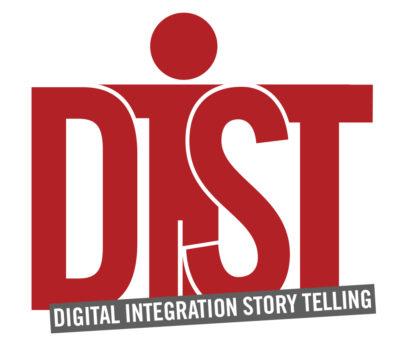DIST builds on a set of methodologies that fit into a general hermeneutic pedagogical approach. Getting people to speak out, share their personal experiences and learn to respect others’ is essential to tackle the intercultural misunderstandings. Issues of misunderstanding are salient around the term ‘integration’, as it ranges from the worrying expectations to assimilate a – allegedly – homogeneous host culture, to the – disappointed – expectation of not accepting our European diversity. One particular way to create meaning and reduce misunderstanding is using narratives. To tell stories and to listen to them are fundamental ways to create understanding and promote integration. This is why we choose digital story telling as our main approach.
Digital Storytelling is a participatory, ICT-based approach. We are thus going to apply it as a core methodology in order to make the most of it in the classroom. It implies a step-by-step procedure, adaptable to different classroom scenarios: particularly briefing, writing, audio and video recording, editing, and ultimately sharing. Within the specific learning groups, a specific focus will be placed on the sharing phase; this is a time in which students voices, especially those of quieter students, who may be more reluctant to speak up in class, may be encouraged (Lowenthal 2009). If we consider the importance of interaction, and assuming that storytelling and story-listening are equally important in this process, we can safely state that the audience will not ever be silent or passive Listeners are always involved in a sort of feedback-loop which is part of the digital storytelling approach. This results in reciprocal learning between the creator of the story and the listener(s). This engagement refers not only to class mates and other partner students but also to the potential receivers in broader national and international contexts.
If one takes culture as a compendium of topics that can be exploited in communication (Wierlacher 1993), it is therefore essential for an improved intercultural understanding to develop a specific set of topics with regards to, for example, cases of successful integration, socio-economic development, educational success, as well as specific difficulties with integration in our search for solutions. It is an essential premise in our DIST project that we try to illustrate successful stories and emphasize positive outcomes. Our objective is to focus on how to be able to overcome the most frequent misunderstandings. We strongly believe that this is best achieved by illustrating good practices and offering good role models to follow – as we work on the identified key issues.
This positive focus particularly refers to the concept of critical incident. Critical incidents are specific, extreme situations, but can be used as exemplary events. We plan to structure stories and make them meaningful as they distinguish it from everyday occurrences. A positive, trustworthy approach also refers to the creation of creative learning spaces. Trust and a protective atmosphere are crucial factors to provide a basis for narratives to unfold with ease. People with personal experiences in withstanding suffering, crisis, violence, would normally be quite suspicious or uncomfortable with, for example, official institutions/organisations. They would need safe spaces in order to open and let their stories unfold naturally.
If oral and written language become – at least partly – a handicap for some participants, we propose to use visual or visually aided communication. Apart from potential language barriers, visual communication provides different forms of access to one’s stories.
DIST thus proposes an integrated approach to gain social, civic, and intercultural competences to help combat misunderstandings and discrimination. It further supports an effective application of ICT in education and training. Our project, thus promotes a proactive use of social media in education. DIST intends to give an innovative use to the concept of digital storytelling, by selecting key topics on integration, highlighting critical illustrating incidents for them, and hoping to improve understanding in classroom contexts. These will be described in teacher manuals with reference to digital stories, and using clear lesson plans. All partners will apply these approaches/scenarios to their local school curricula. These scenarios will be flexible and will work as separate lessons for specific projects, as well as part of regular lesson plans lasting, for example, a month or two.


